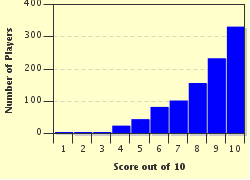Quiz Answer Key and Fun Facts
1. Which planet has a moon named Phobos that is predicted to possibly smash into the planet sometime within the next 30-50 million years?
2. Named after a Trojan prince in Greek mythology, what is the largest moon in our solar system, which can be seen in this photo of Jupiter?
3. What kind of astronomical object is defined as an interstellar cloud of ionized gasses and dust?
4. By looking at this image, can you tell me what general kind of galaxy the Milky Way is?
5. This is an image of which planet that has four moons named Proteus, Larissa, Galatea, and Despina?
6. I am sure that my friend known as Agent 86 could answer just what is the name of the dark space seen here in the rings of Saturn?
7. This is an image of some of the craters of which planet, known for its sulfuric acid clouds?
8. This beautiful image captures which solar activity that is described as the act of a very large star exploding?
9. Author Mark Twain could tell you that this is an image of which celestial body that is seen on earth every 75 to 76 years?
10. Which one of the following options is responsible for most of the photographs in this quiz?
Source: Author
dcpddc478
This quiz was reviewed by FunTrivia editor
WesleyCrusher before going online.
Any errors found in FunTrivia content are routinely corrected through our feedback system.


